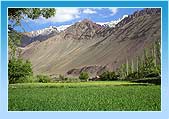| Call Us Fax No. |
+(91) - 9717929990 +(91)-(124)-4635544 : mail@toptravelindia.com, topindia@gmail.com |

| Call Us Fax No. |
+(91) - 9717929990 +(91)-(124)-4635544 : mail@toptravelindia.com, topindia@gmail.com |

| Home | About us | Hotels | Car Rental | India Holidays Tours | International Holidays |

Service |

 >The
span of the summer season slightly differs in different zones of the
country. For instance, summer in northwestern India extends from April to
July whereas for the rest of the, the period is from March till June. The
northern part of the Indian subcontinent experiences a rise of temperature
as the rays of the sun reach the Tropic of Cancer. The western and the
southern regions of India show the maximum temperatures in the month of
April. However, May happens to be the hottest month for the northern parts.
A major portion of the interior India records a maximum temperature of 40
degrees centigrade. There are some parts where the maximum shows 49 degrees
centigrade or even higher.
>The
span of the summer season slightly differs in different zones of the
country. For instance, summer in northwestern India extends from April to
July whereas for the rest of the, the period is from March till June. The
northern part of the Indian subcontinent experiences a rise of temperature
as the rays of the sun reach the Tropic of Cancer. The western and the
southern regions of India show the maximum temperatures in the month of
April. However, May happens to be the hottest month for the northern parts.
A major portion of the interior India records a maximum temperature of 40
degrees centigrade. There are some parts where the maximum shows 49 degrees
centigrade or even higher. After
the scorching summer months, the monsoons bring a lot of relief for people.
Soon with the arrival of rains, the countryside seems to present a new
scenery with lush greenery all around. The monsoons can be segregated into
the Bay of Bengal branch and the Arabian Sea branch. It is to be noted that
around 80% of the country's total rainfall depends on the southwest summer
monsoons. Rains begin to hit the country by the end of May. The active
weather system and the intense heating in the Bay of Bengal give rise to
cyclones that generally affect the coastal states of Andhra Pradesh, Orissa,
Tamil Nadu and West Bengal.
After
the scorching summer months, the monsoons bring a lot of relief for people.
Soon with the arrival of rains, the countryside seems to present a new
scenery with lush greenery all around. The monsoons can be segregated into
the Bay of Bengal branch and the Arabian Sea branch. It is to be noted that
around 80% of the country's total rainfall depends on the southwest summer
monsoons. Rains begin to hit the country by the end of May. The active
weather system and the intense heating in the Bay of Bengal give rise to
cyclones that generally affect the coastal states of Andhra Pradesh, Orissa,
Tamil Nadu and West Bengal.  >As
the monsoons settle, the temperature across the country begins to fall. The
months of December and January happen to be the coldest during the season.
In the aforementioned months, the mean temperature in the northwest and the
Himalayan region record 10 to 15 degrees centigrade. In the eastern and the
southern parts, the mean temperature hovers between 20 and 25 degrees
centigrade. In October and November, the sky is cloudless in the
northwestern India. A cooler weather can be noticed in the southern parts
including states like Maharashtra, Madhya Pradesh, Karnataka and Andhra
Pradesh. Snowfall can be experienced in the hill towns of the Himalayas. The
coastal area remain warm while the Nilgiri Ranges (southern part), show
temperatures below freezing point.
>As
the monsoons settle, the temperature across the country begins to fall. The
months of December and January happen to be the coldest during the season.
In the aforementioned months, the mean temperature in the northwest and the
Himalayan region record 10 to 15 degrees centigrade. In the eastern and the
southern parts, the mean temperature hovers between 20 and 25 degrees
centigrade. In October and November, the sky is cloudless in the
northwestern India. A cooler weather can be noticed in the southern parts
including states like Maharashtra, Madhya Pradesh, Karnataka and Andhra
Pradesh. Snowfall can be experienced in the hill towns of the Himalayas. The
coastal area remain warm while the Nilgiri Ranges (southern part), show
temperatures below freezing point. | India Destination | Tourist Attractions | India Holidays Tours | Neighbouring Country | India Travel Guide |
|
© Sai Holidays. All Rights Reserved (Terms
of Use) |